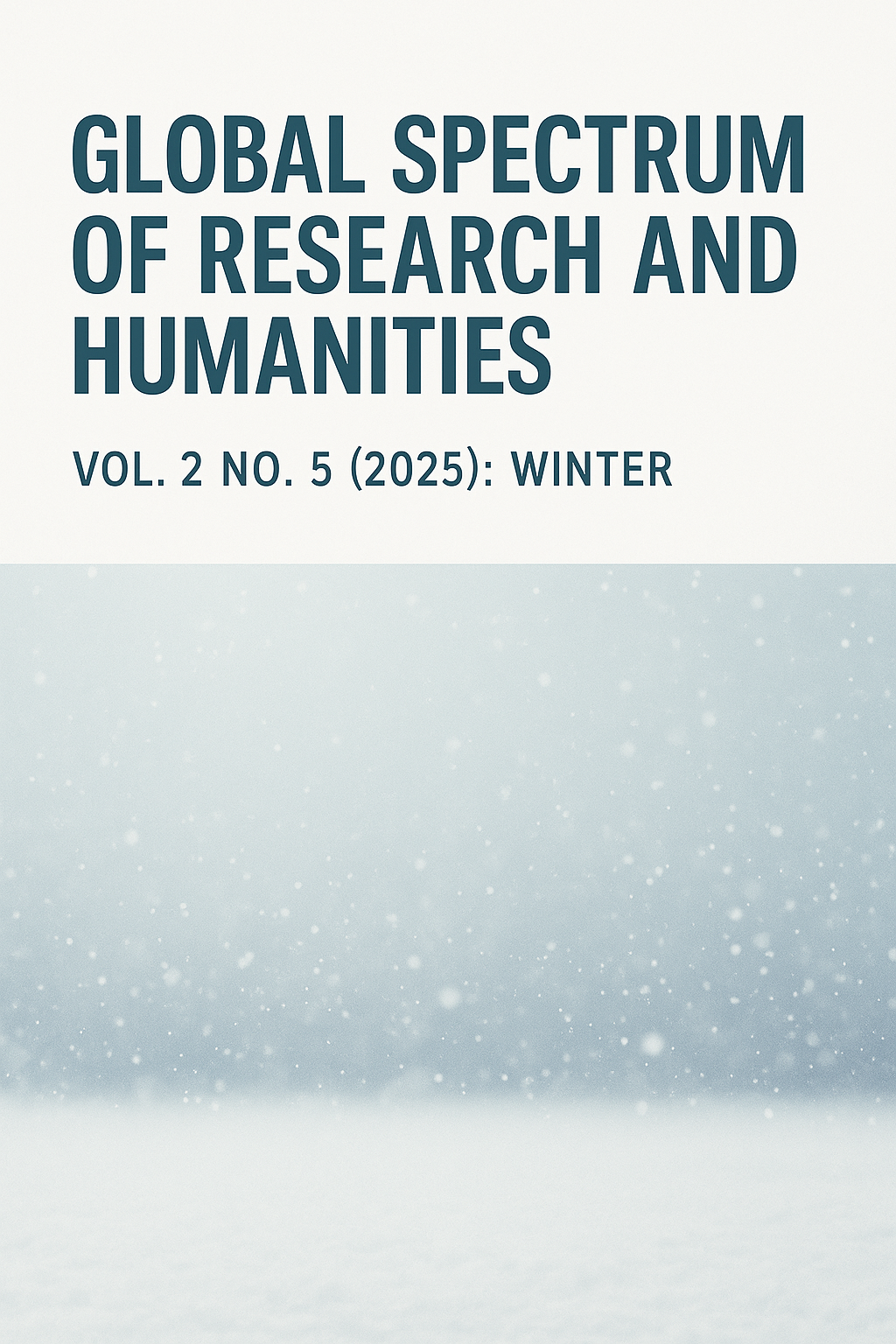Fostering Global Citizenship through English Language Teaching
DOI:
https://doi.org/10.69760/gsrh.0250205005Keywords:
Global Citizenship Education, English Language Teaching, Intercultural Competence, Teacher Education, Telecollaboration, Critical PedagogyAbstract
In today’s increasingly interconnected world, education plays a central role in preparing learners to become active, responsible, and culturally aware members of a global society. Global Citizenship Education (GCE) has emerged as a key framework for fostering critical thinking, intercultural understanding, and civic engagement. Given its status as a global lingua franca, English Language Teaching (ELT) provides a unique platform for integrating GCE principles into language education.
This study adopts a conceptual and literature-based approach to examine how ELT can foster global citizenship through three interrelated dimensions: pedagogical strategies, teacher education, and technology-mediated practices. Drawing on key scholarship (e.g., Tichnor-Wagner et al., 2017; Harshman & Augustine, 2013; Ekanayake et al., 2020; Santana et al., 2025; Choi, 2025), the article synthesizes current theoretical perspectives and identifies effective practices for integrating global issues into language classrooms.
The findings highlight that intercultural and critical pedagogies, combined with well-designed professional development programs, enable teachers to incorporate global themes into language instruction effectively. Furthermore, telecollaboration and digital platforms create authentic opportunities for intercultural communication, supporting learners’ linguistic and global competencies simultaneously.
The study concludes that fostering global citizenship through ELT requires a synergistic relationship between pedagogy, teacher preparation, and technology. It provides practical implications for educators, curriculum designers, and policymakers, while also identifying areas for future empirical research to explore classroom-based applications of GCE in language education.
References
Alisoy, H., & Sadiqzade, Z. (2024). Mobile-assisted language learning (MALL): Revolutionizing language education. Luminis Applied Science and Engineering, 1(1), 60–72.
Babayev, J. (2021). The role of instructional materials in language learning. ELMİ XƏBƏRLƏR, Humanitar elmlər seriyası, 2, 29–35.
Choi, K. (2025). Fostering global citizenship in EFL students through telecollaboration. ELT Journal, 79(2), 194–204.
Ekanayake, K., Khatibi, A., & Azam, F. (2020). The impact of teacher education and English language education in fostering global citizenship education: A review of literature. International Journal of Advances in Scientific Research and Engineering, 6(7), 30–40.
Harshman, J. R., & Augustine, T. A. (2013, October). Fostering global citizenship education for teachers through online research. In The Educational Forum (Vol. 77, No. 4, pp. 450–463). Taylor & Francis Group.
Ismayilli, T. (n.d.). Assessment and evaluation of foreign language knowledge. Elmi Tədqiqat, 52.
Nuri, A. (2024). The impact of social networks on language learning: A comprehensive analysis. EuroGlobal Journal of Linguistics and Language Education, 1(2), 65–71.
Nuri, A. B., Asadova, A. A., Heyderova, N. A., & Mammadova, K. M. (2024). Cuestiones de género en la educación. Universidad y Sociedad, 16(6), 272–278.
Santana, A. G. D. L. A., Martins, L. F., & Souza, V. V. S. (2025). Teaching English in the globalized world: Fostering an education for a plurilingual and intercultural global citizenship. Ñemitỹrã, 7(2), 95–115.
Tichnor-Wagner, A., Parkhouse, H., Glazier, J., & Cain, J. M. (2017). Expanding approaches to teaching for diversity and social justice in K-12 education: Fostering global citizenship across the content areas. Education Policy Analysis Archives, 24(59), 2.
Downloads
Published
Issue
Section
License
Copyright (c) 2025 Global Spectrum of Research and Humanities

This work is licensed under a Creative Commons Attribution-NonCommercial-NoDerivatives 4.0 International License.




